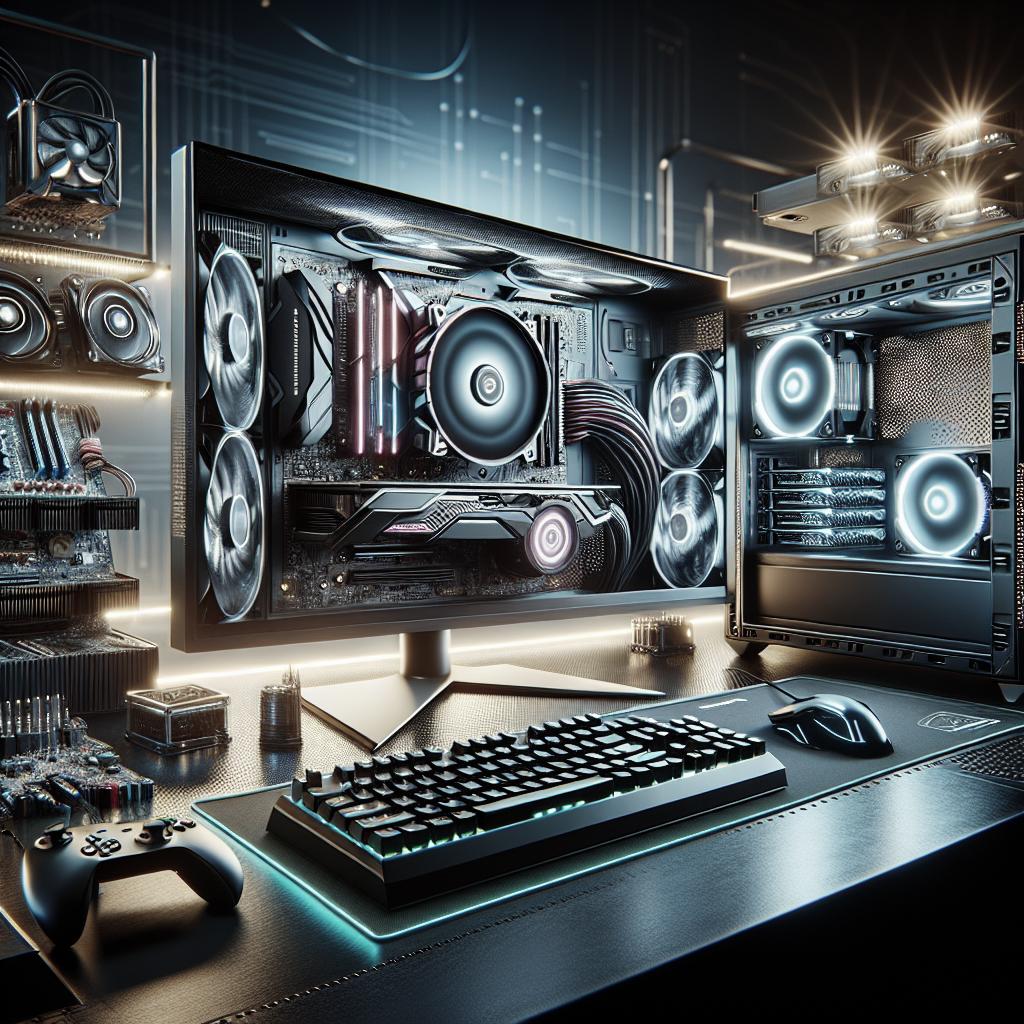Crafting the Ultimate Gaming Experience: Optimal Settings for High-Performance Gaming Gaming has evolved into a sophisticated and immersive experience, thanks to advances in technology. Whether you’re a casual gamer or a competitive eSports athlete, achieving optimal performance from your gaming setup is crucial. This post delves into the ideal settings you can use for high-performance gaming, exploring everything from hardware configurations to software optimizations. You’ll learn how to balance quality with performance and ensure you get the most out of your games. We’ll explore key takeaways, current trends in the gaming tech world, and answer a pressing question: Can your computer handle the latest games? As gaming technology continues to advance, understanding these nuances can elevate your experience, keeping it both smooth and visually stunning. ## FAQ When it comes to gaming, one size certainly doesn’t fit all. Having a firm understanding of optimal gaming settings involves addressing a multitude of frequently asked questions (FAQs) from both new and seasoned gamers. These queries often revolve around achieving the best balance between visual fidelity and performance, selecting the right hardware, or fine-tuning in-game settings. For example, a common query is how to increase frames per second (FPS)—an essential metric for fluid gameplay. Adjustments, such as reducing the graphical fidelity to optimize CPU and GPU performance or tweaking V-Sync settings to prevent screen tearing, can substantially enhance gameplay. Another frequent question is about suitable monitors and resolutions; high refresh rates, like 144Hz or even 240Hz, are recommended for smoother visuals, particularly in fast-paced games. Questions about compatibility arise often, such as whether a specific game can run on older hardware. By addressing these questions collectively, gamers can make more informed decisions to create a more seamless gaming experience. ### Key Takeaways Performance tuning isn’t just for enthusiasts or those with high-end equipment; understanding the core elements can benefit all gamers. At the heart of high-performance gaming is the need for a balanced system that can handle the visuals and speed requirements of modern games without sacrificing performance or stability. Graphics settings are perhaps the most impactful tweak you can make. Lowering settings such as shadow quality, anti-aliasing, and texture quality can provide an immediate boost to performance, often with minimal impact on the visual experience. Resolution scaling can also be a handy tool; by setting the game at a lower internal resolution, the game can run more smoothly while being displayed at your monitor’s native resolution. Keeping drivers up-to-date is another critical element. GPU manufacturers like NVIDIA and AMD regularly release updates that can offer more than just bug fixes—they often include substantial performance improvements for the latest games. Combined, these elements form the backbone of any high-performance gaming system. ### Trending Now The gaming industry is a rapidly evolving field where new technology trends emerge continuously, greatly impacting how gamers approach performance optimization. One of the most talked-about trends is ray tracing—a rendering technique that provides cinematic lighting effects—adding realism but demanding significant GPU resources. NVIDIA’s RTX line and AMD’s RX series support such technologies, making powerful graphics cards more prevalent among gamers who seek cutting-edge visuals. Another trend is the adoption of high dynamic range (HDR) displays. HDR offers better contrast ratios and wider color spectrums, enhancing visual immersion. Although having an HDR-compatible monitor and graphics card is necessary, the trade-off in picture quality is worth the lower frame rates. Moreover, SSD adoption continues to skyrocket, dramatically reducing load times compared to traditional HDDs. With DirectStorage technology gaining traction alongside NVMe SSDs, gamers experience quicker game launches and seamless level transitions—vital for maintaining in-game immersion. ### Q: Can my computer run games? One of the frequent concerns for gamers is whether their current computer setup can handle the latest games. Assessing your system’s capability often starts with examining the minimum and recommended system requirements specified by the game developers. These details usually encompass aspects like CPU power, RAM, GPU, and available storage space. Tools like “Can You RUN It” are popular for quick compatibility checks, automatically analyzing your hardware against a database of game requirements. For those with mid-range or lower-end setups, adjustments can be made to accommodate the latest titles. Lowering in-game graphics settings, such as shadows, texture quality, and anti-aliasing can significantly improve overall performance and smoothness. Overclocking your existing hardware carefully can also yield benefits, though it should be done judiciously to prevent overheating or long-term damage. With cloud gaming platforms like NVIDIA’s GeForce NOW and Google Stadia gaining traction, another possibility is to bypass hardware limitations altogether. These services allow users to stream games from powerful servers, making high-performance gaming accessible even on humble machines—provided a stable, high-speed internet connection is available. Final Thoughts The optimal settings for high-performance gaming vary greatly depending on individual preferences and hardware configurations. By understanding the balance between visual quality and system performance, and by staying abreast of current gaming technology trends, you can elevate your gaming sessions to new heights without breaking the bank. Keep experimenting with different settings to find the perfect blend that works uniquely for your system setup. Below is a summary of key points: “`html
| Aspect | Recommendations |
|---|---|
| Graphics Settings | Adjust shadows, anti-aliasing, and resolution for better FPS |
| Hardware Updates | Regularly install GPU driver updates for optimal performance |
| Latest Trends | Consider ray tracing, HDR displays, and SSDs for enhanced visual quality |
| System Compatibility | Check system requirements and explore cloud gaming for accessibility |
“` These insights give you a solid foundation to tailor your gaming experience, bridging the gap between your current setup and high-performance gaming ideals.


